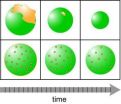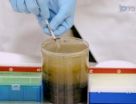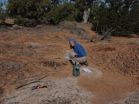(Press-News.org) CHAMPAIGN, Ill. — Cellphones and driving go together like knives and juggling. But when cellphone use is banned, are drivers any safer?
It depends on where you're driving, a study by University of Illinois researchers says.
The study found that, long-term, enacting a cellphone ban was associated with a relative decrease in the accident rate in urban areas. However, in very rural areas, cellphone bans were associated with higher accident rates than would otherwise be expected.
"The main idea is to use the eye test when it comes to cellphone use," says study leader Sheldon H. Jacobson, a professor of computer science and mathematics at the U. of I. "If you look around and it's busy, it's a good idea to put the cellphone down and not use it when driving."
The Illinois study, published in the journal Transportation Research Part A: Policy and Practice, is set apart by two factors: the length of time and the method of measuring driver density.
The study examines long-term trends of accident rates and their association with cellphone bans, comparing seven years of driver data in New York – the first state to institute a statewide ban – and neighboring Pennsylvania, which has no ban. Both states have similar weather patterns and wide diversity in size and population density of counties.
"Most other studies focus on a very short-term analysis," Jacobson said. "A law is enacted; what's the impact immediately? We try to take a much longer view and look at the impact not just over six months to a year, but over several years."
While most studies define driver density by licensed drivers per square mile, the Illinois researchers looked at the number of licensed drivers per mile of roadway to get a better estimate of traffic volume by county. They classified counties as urban, rural or very rural, and performed statistical analyses to look for trends in accident rates in each class over time.
Across all three classes, enacting a cellphone ban was associated with an initial rise in accident rate, followed by a steeper decline than would otherwise be expected, although the magnitude differed in each class of counties. In higher driver density areas, there was a clear, statistically significant, association between the enacting of a cellphone ban and relative reduction in personal injury accidents after seven years. By contrast, such bans in very rural areas were associated with a relative increase in accident rates over the same period.
"What we found in our research is that the cellphone ban was associated with different outcomes in different groups of counties," said industrial and enterprise systems engineering researcher Douglas King, a co-author of the study. "Based on this research, it suggests that a blanket cellphone ban may not always lead to a greater benefit. Based on the seven-year time period that we were able to examine, the outcome in each group of counties after the ban was not uniformly beneficial."
The cause of the slight increase of accidents in very rural areas is unknown, although Jacobson and King hypothesize that lower enforcement or other factors unique to rural driving may contribute.
"The other possible explanation is that in lower driver density areas, the number of accidents is smaller, and as a result the data collected isn't as rich," Jacobson said "This could be just a statistical anomaly."
Whatever the reason for the relative increase in rural accidents, the relative decline in urban accidents in New York versus Pennsylvania was clear: After the initial ban enactment, accident rates declined and continued to be lower over time.
"This is the kind of research that definitely should encourage densely populated areas to enact these laws," King said. "There's sufficient evidence to support it. When you start getting into rural and very rural areas, I think you have to have to take it in a case-by-case basis. But for urban areas, the evidence is substantial."
INFORMATION:
U. of I. graduate student Kevin Ryan and Air Force Institute of Technology researcher Matthew Robbins were co-authors of the paper. This work was supported by the Simulation and Optimization Laboratory in the department of computer science at the U. of I.
Editor's note: To contact Sheldon Jacobson, call 217-244-7275; email shj@illinois.edu.
The paper, "Assessing the Long-term Benefit of Banning the Use of Hand-held Wireless Devices While Driving," is available online.
END
RICHLAND, Wash. -- Pollution from fossil fuel burning and forest fires reaches all the way to the Arctic, even though it should decay long before it travels that far. Now, lab research can explain how pollution makes its lofty journey: rather than ride on the surface of airborne particles, pollutants snuggle inside, protected from the elements on the way. The results will help scientists improve atmospheric air-quality and pollution transport models.
The results also show that the particles that envelop pollutants also benefit from this arrangement. The new study in Environmental ...
Researchers at the McCormick School of Engineering are part of a team that has used stretchable electronics to create a multipurpose medical catheter that can both monitor heart functions and perform corrections on heart tissue during surgery.
The device marks the first time stretchable electronics have been applied to a surgical process known as cardiac ablation, a milestone that could lead to simpler surgeries for arrhythmia and other heart conditions. The researchers had previously demonstrated the concept to apply stretchable electronics to heart surgery, but with ...
CORVALLIS, Ore. – Electrical engineers at Oregon State University have developed new technology to monitor medical vital signs, with sophisticated sensors so small and cheap they could fit onto a bandage, be manufactured in high volumes and cost less than a quarter.
A patent is being processed for the monitoring system and it's now ready for clinical trials, researchers say. When commercialized, it could be used as a disposable electronic sensor, with many potential applications due to its powerful performance, small size, and low cost.
Heart monitoring is one obvious ...
Magnetotactic bacteria, like Magnetospirillum magneticum, have evolved cellular processes that allow them to take up iron molecules to produce magnetic nanocrystals like magnetite. Since they were first discovered and isolated in 1975 by Robert Blakemore, scientists continue to be fascinated by these unique bacteria, whether as a means to isolate biogenic magnetite or to understand the evolutionary advantages of producing these minerals. A new video-article in JoVE (Journal of Visualized Experiments) details a procedure to purify and enrich samples of magnetotactic bacteria ...
Last March, researchers at UCLA reported the development of a molecular compound called CLR01 that prevented toxic proteins associated with Parkinson's disease from binding together and killing the brain's neurons.
Building on those findings, they have now turned their attention to Alzheimer's disease, which is thought to be caused by a similar toxic aggregation or clumping, but with different proteins, especially amyloid-beta and tau.
And what they've found is encouraging. Using the same compound, which they've dubbed a "molecular tweezer," in a living mouse model ...
PULLMAN, Wash.—Washington State University researchers have found an unlikely recipe for antibiotic resistant bacteria: Mix cow dung and soil, and add urine infused with metabolized antibiotic. The urine will kill off normal E. coli in the dung-soil mixture. But antibiotic-resistant E. coli will survive in the soil to recolonize in a cow's gut through pasture, forage or bedding.
"I was surprised at how well this works, but it was not a surprise that it could be happening," says Doug Call, a molecular epidemiologist in WSU's Paul G. Allen School for Global Animal Health. ...
What can high school and college-age video game enthusiasts teach young surgeons-in-training?
According to a new study from researchers at the University of Texas Medical Branch at Galveston (UTMB) – a world leader in minimally invasive and robotic surgery – the superior hand-eye coordination and hand skills gained from hours of repetitive joystick maneuvers mimic the abilities needed to perform today's most technologically-advanced robotic surgeries.
To offer insight on how best to train future surgeons, the study placed high school and college students head to head ...
Some arid lands in the American West degraded by military exercises that date back to General George Patton's Word War II maneuvers in the Mojave Desert should get a boost from an innovative research project led by the University of Colorado Boulder.
Headed up by CU-Boulder Assistant Professor Nichole Barger, the research team is focused on developing methods to restore biological soil crusts -- microbial communities primarily concentrated on soil surfaces critical to decreasing erosion and increasing water retention and soil fertility. Such biological soil crusts, known ...
By combining the power of the NASA/ESA Hubble Space Telescope, NASA's Spitzer Space Telescope and one of nature's zoom lenses, astronomers have found what is probably the most distant galaxy yet seen in the Universe. The object offers a peek back into a time when the Universe was only 3 percent of its present age of 13.7 billion years.
We see the newly discovered galaxy, named MACS0647-JD, as it was 420 million years after the Big Bang. Its light has travelled for 13.3 billion years to reach Earth, which corresponds to a redshift of approximately 11 [1].
This is the ...
An efficient, high-volume technique for testing potential drug treatments for Alzheimer's disease uncovered an organic compound that restored motor function and longevity to fruit flies with the disease, according to new research that could help put the search for an effective Alzheimer's drug on a faster track.
Princeton University researchers report in the Journal of Biological Chemistry that they discovered an organic compound that prevented the formation of protein clumps, or aggregates, found on human brain cells afflicted by Alzheimer's disease. The researchers ...




